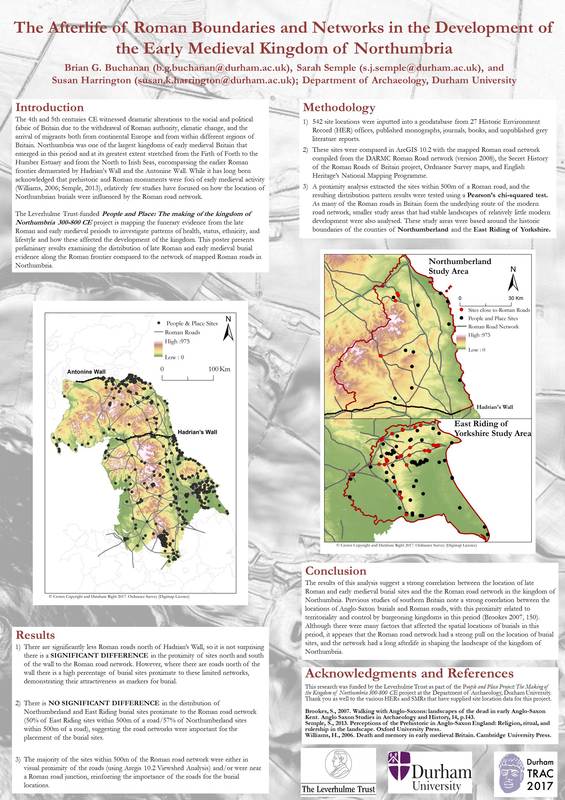The 542 site locations currently in the People and Place database were analysed using ArcGIS 10.2. The sites were compared to a Roman road network mapped from combining the results of DARMC Roman Road network project (version 2008), the Secret History of the Roman Roads of Britain project, Ordnance Survey maps, and English Heritage’s National Mapping Programme. A proximity analysis extracted the burial sites within 500m of a Roman road, and the resulting distribution pattern results were tested using a Pearson’s chi-squared test. As many of the Roman roads in Britain form the underlying modern road network, smaller study areas containing stable landscapes of relatively little modern development were also investigated using the historic boundaries of Northumberland and the East Riding of Yorkshire.
The results demonstrate a significant difference in the proximity of burial sites north and south of Hadrian’s Wall in comparison to the Roman road network, with the sites south of the wall in general positioned closer to the road network. This is perhaps not surprising as there are significantly less Roman roads north of the wall. However, where there are roads north of the wall, there is a high percentage of burial sites proximate to these limited networks, demonstrating their attractiveness as markers for burial. This was further supported in the analysis of the smaller study areas which demonstrated no significant differences in the distribution of Northumberland and East Riding burial sites proximate to Roman road networks. Finally, the majority of the sites within 500m of the Roman road network were in visual proximity of the roads based off of a viewshed analysis using the 5m digital terrain model of the project area.
The results of this analysis, while preliminary, suggest a strong correlation between the location of late Roman and early medieval burial sites and the Roman road network in the kingdom of Northumbria – something we plan to investigate further.

 RSS Feed
RSS Feed
